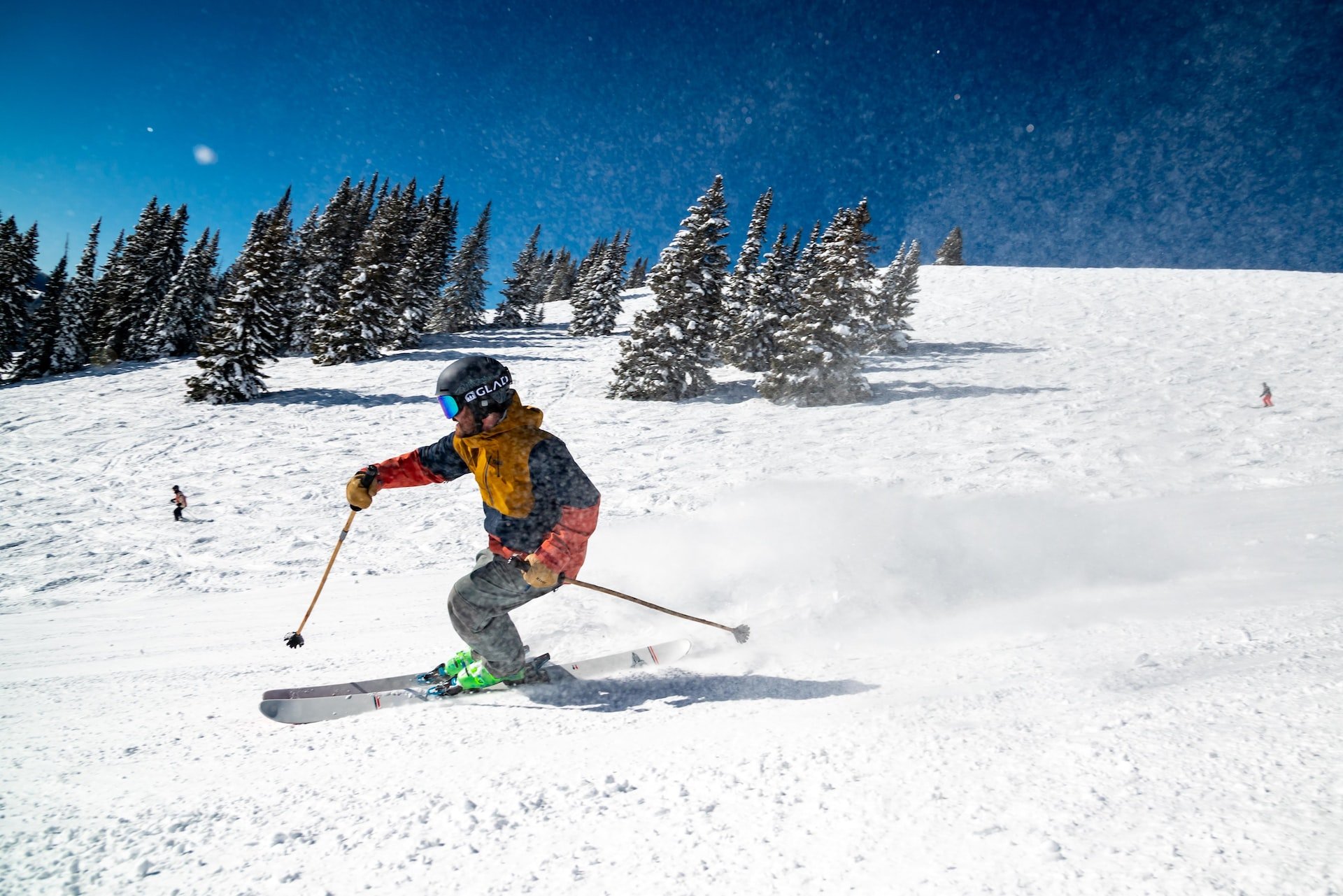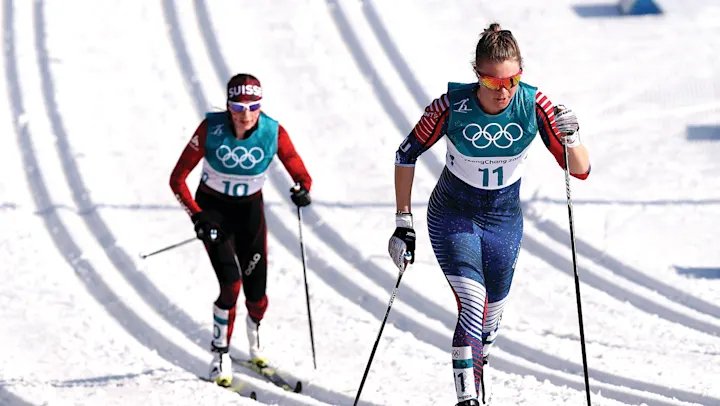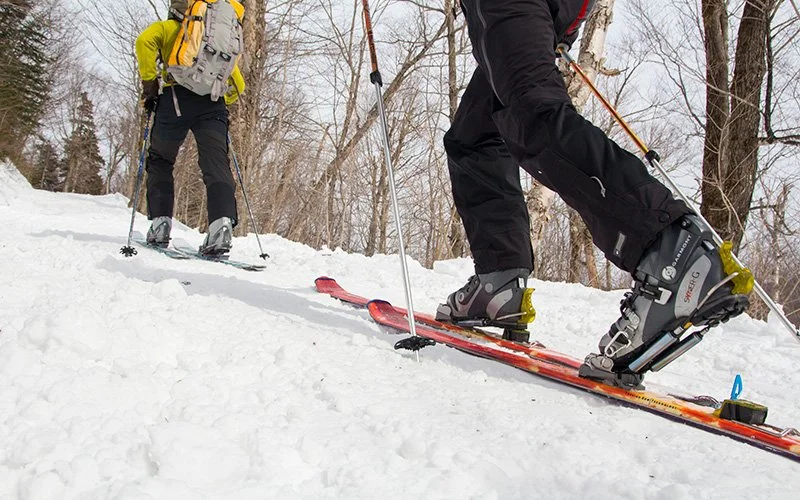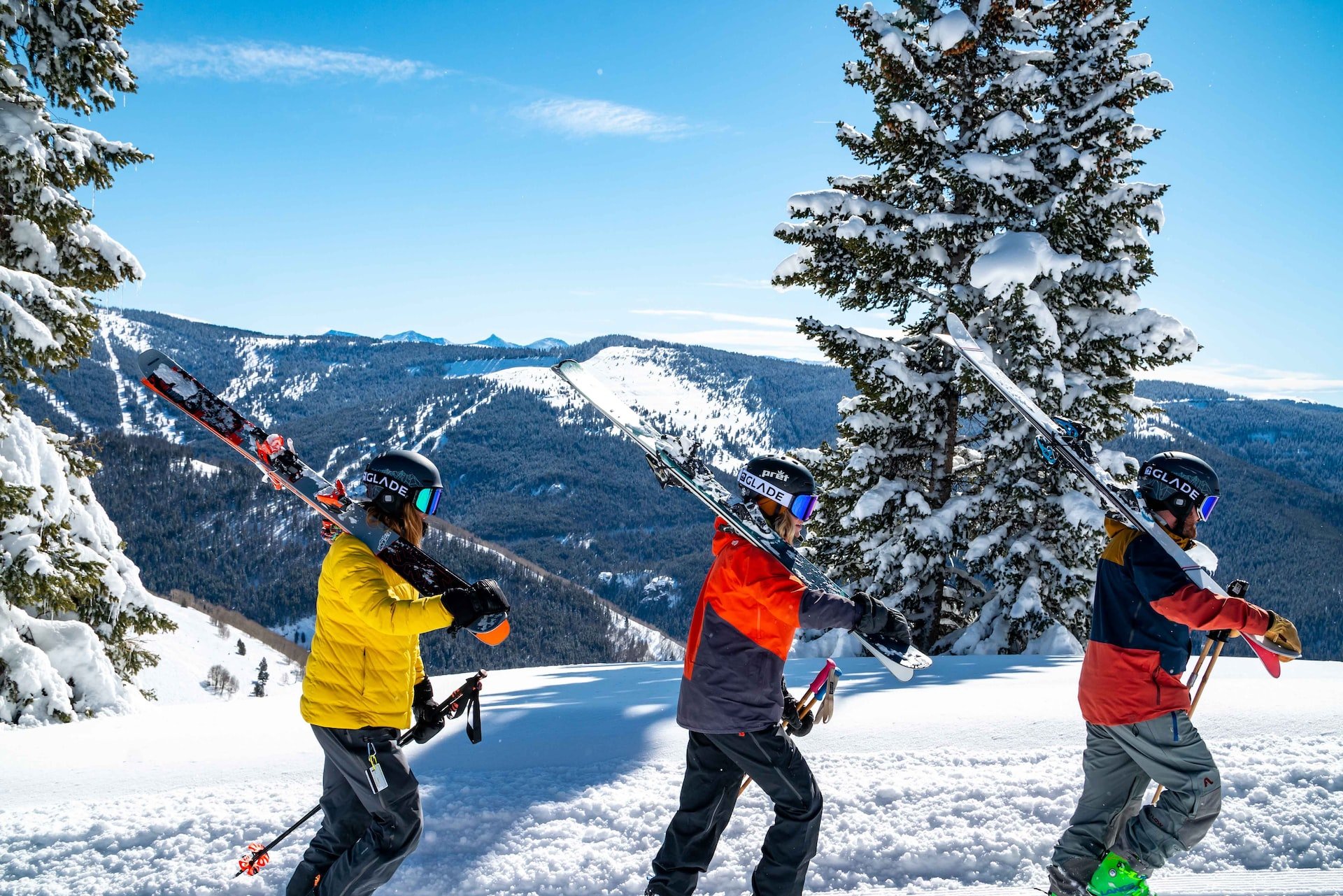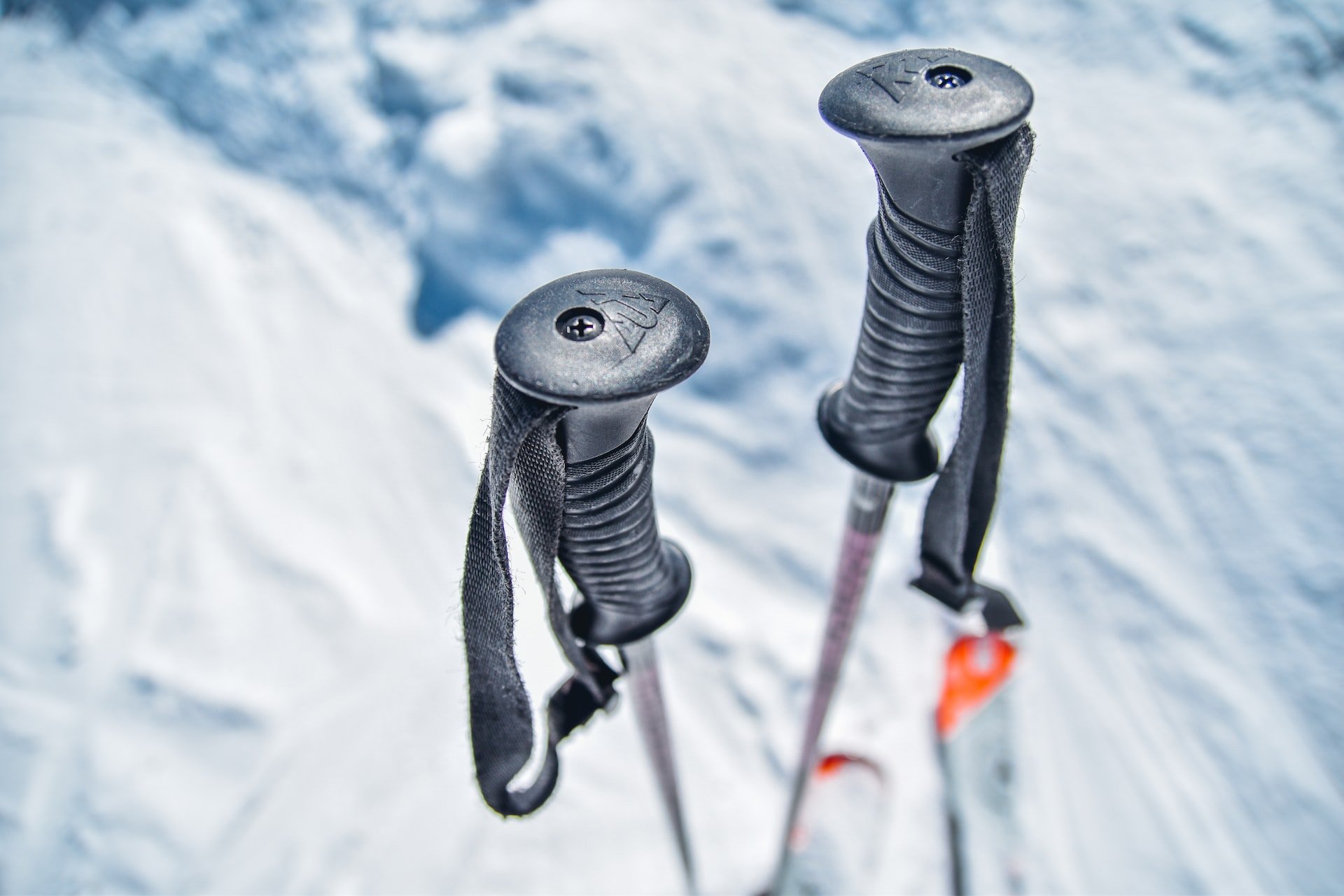Nordic Skiing vs Cross-Country Skiing: Differences Explained
It’s that time of year again! No, we don’t mean Christmas or the winter holidays, although they do have some connection to this topic. We’re talking about the time of year when the snow calls you outside and invites you to explore nature. If you enjoy outdoor sports, you know this feeling all too well and have probably been counting down the months for this moment. If all of this is new to you, why not try out some new activities and learn to enjoy the best that winter landscapes have to offer?
For those fortunate enough to live — or travel — near mountainous areas, a sport like Nordic skiing can be an easy way to begin. The activity requires minimal equipment and skills, making it perfect for people who are new to skiing but have a great deal of enthusiasm to learn.
There’s more than one type of Nordic skiing, so you might want to get to know each one and learn what you might need if you decide to try out a new outdoor adventure.
Photo by Glade Optics on Unsplash
What is Nordic Skiing?
Believe it or not, skiing began with Nordic skiing, with skis first being used to help people walk in the snow or hunt during winter. The equipment allows people to move more easily on snowy trails, using movements that are not too different from walking or running on normal ground.
It was only centuries later that skis were altered to attach to the heel for use when going down slopes or performing jumps. The skills required for these types of activities are different, meaning that people need to have more strength and balance control.
The activity we now know as Nordic skiing actually includes many different types of skiing, all of which are related to not having the foot completely attached to the binding of the ski. This allows athletes — or people interested in exploring snowy landscapes — to lift their heels when moving their legs, resulting in a more natural and familiar motion than when the skis are attached to the heel as well.
In this article, you will learn more about the different types of Nordic skiing, including cross-country and Telemark, and how they vary.
The History of Nordic Skiing
The true birthplace of skiing is a hotly debated subject, but it is a practice that can be dated back millennia. It is believed that Russians used pieces of wood to travel over the snow back around 6000 BCE; however, ancient cave paintings suggest that skis were used in China thousands of years ago.
People would use pieces of wood and large poles to help them cross frozen lakes or move faster over snow, especially when hunting or trying to escape danger. The armed forces of countries such as Russia, Norway, Denmark, and Sweden have also used similar equipment when traversing snowy terrain.
However, skiing as we know it today — as a sport or leisure activity — wasn’t developed until the 18th century, when Danish, Norwegian, and Swedish armies would include downhill races as a military exercise. It was only in 1843 that the first-ever public skiing competition was held in Tromsø, Norway.
The word ski itself originates from an Old Norse word meaning “cleft wood” or “stick of wood”.
The Different Styles of Nordic skiing
As we mentioned above, Nordic skiing includes any style of walking on snow using skis that are not fully attached to the feet and allow for more ankle movement while holding poles for balance.
The term is often interchangeably with “cross-country skiing”, but this isn’t necessarily correct, as cross-country skiing is actually just one style of Nordic skiing. Along with cross-country, Nordic skiing styles include Telemark and alpine touring. Each one requires a specific type of equipment for exploring the different terrain you might encounter.
So here are the different styles of Nordic skiing and what each one entails:
Cross-country
Photo credit: Olympics
If your first thought when hearing “Nordic skiing” involves going for nice walks through gorgeous snowy scenery, mostly on flat ground, you are probably thinking of cross-country skiing. When doing cross-country skiing, you can either follow pre-determined tracks or explore different terrain.
Cross-country skiing is a perfect sport for people who are not very experienced in walking on snow, and it’s even a common recreational activity in countries that get lots of snow, such as Norway, Denmark, or Sweden. The sport is also very affordable, as it does not require a great deal of equipment. Ski resorts, parks, and mountains often have trails designed especially for cross-country skiing, making them perfect for beginners to get started.
The techniques used in cross-country skiing are quite different from those used by people taking part in downhill skiing. As the skis worn for cross-country skiing are not meant to be used to go down slopes, they can be lighter and narrower to help athletes glide along trails.
Alpine Touring
Photo credit: traventuria
Alpine touring is a style of Nordic skiing that resembles downhill skiing, as it allows people to go up or down slopes with their skis. The equipment for this style is different from other varieties of Nordic skiing, with skis that are heavier and thicker than those worn by cross-country skiers.
Athletes taking part in this type of skiing also have the option to have their heels attached to the skis, making the equipment more versatile and allowing for the exploration of different types of terrain.
This sport most often takes place at resorts, where structures have been built as a way to aid skiers when climbing up slopes.
Telemark Skiing
Photo credit: Apalachian Mountain Club
Telemark skiing and Alpine touring are very similar. Both sports allow skiers to explore flat snowy ground as well as steep slopes, with athletes enjoying the thrill of skiing downhill whenever necessary.
The key difference between these two styles of Nordic skiing lies in the equipment. Telemark skis do not attach to the heel, much like in the cross-country style. Since the heels are always free to move, even when going up or downhill, people considering Telemark skiing need to be more experienced, especially when it comes to going down mountains.
The other styles mentioned are more beginner-friendly.
Nordic Skiing vs Cross-country
Photo by Glade Optics on Unsplash
As we’ve learned, cross-country skiing is probably the easiest style of Nordic skiing, requiring less experience in going up or downhill and using more natural movements that are similar to walking or running over normal ground.
Although cross-country skiing is a style of Nordic skiing, it also has sub-categories of its own which offer a wider range of activities, movements, and terrains.
In order to get more familiar with this welcoming-to-everyone style of Nordic skiing, here are the different varieties of cross-country skiing that you need to be aware of:
Classic
Classic cross-country skiing is the most popular way of practising the sport. In this style, people will follow pre-determined tracks, which are easier to glide on and don’t present too many challenges, especially for novices.
This style is very common in parks and resorts during the winter months, with the tracks being maintained regularly. The more the tracks are used, the easier it is to glide across the snow.
When practising classic cross-country skiing, you’ll become accustomed to the equipment and the style of movement needed when walking on snow. The trails will keep you in safe areas, presenting very few challenges and enabling you to enjoy the scenery.
Skate Skiing
Unlike the classic cross-country skiing style, skate requires a bit more technique. People practising this style will use a motion similar to speed skaters on ice. Instead of staying on a pre-determined track, skate skiers might need to venture off the beaten path and skate through the snow by positioning their feet at a slight angle as they advance. Propelling yourself across the snow like this can make for a great workout too.
For people who enjoy ice skating, this style can be interesting to try due to the similarities in the movement and effort used to ski.
Light Touring
Touring means going off-trail. For those interested in a bit more adventure when skiing, light touring will allow you to venture off pre-determined paths and explore different types of terrain.
The equipment for this style of cross-country skiing tends to be geared towards the unpredictability of the environment, resulting in skis that are heavier and sturdier.
Backcountry Touring
People who want even more adventure on their ski outings might want to try backcountry touring. This style also allows skiers to go off-trail but over tougher, more rugged terrains.
Since the ground on which skiers practise touring — both light and backcountry — is not prepared specifically for the sport, the equipment needs to be tough enough to be used in deeper snow or on harder surfaces.
For this variety of skiing in harsh terrain, the skis should have metal edges.
Equipment for Nordic Skiing
Photo by Urban Sanden on Unsplash
The most important difference between all these different styles of Nordic skiing is the equipment used. You should consider your level of experience with skiing when deciding on the best style for you, but it is also important to be prepared for the terrain you might find.
Each style of Nordic skiing requires a specific type of ski to enable the athlete to avoid injuries and sustain movement on flat ground or slopes. Depending on where you want to explore, it is essential to plan ahead and be prepared for the challenges you might encounter.
The same can be said for all of the different styles of cross-country skiing, with the terrain playing a vital role when choosing which equipment to use.
Classic cross-country skiing requires skis that are long, narrow, and light, making them perfect for pre-determined, well-maintained tracks. Skis designed for cross-country skating are a bit shorter, allowing for more movement from the feet when propelling yourself forward.
Light and backcountry touring skis, on the other hand, need to have metal edges for better stability and grip over off-track terrain.
If you plan to go up or down mountains, skis that will allow you to attach your heels to the binding will provide more stability and safety since equipment that keeps your feet loose might require more effort during movement.
Choosing the right length of the skis is another crucial factor that can depend on your experience and your needs. The longer the skis, the faster the moment and the more challenging it will be to glide on the snow. You should choose shorter skis if you are inexperienced or if you’re still not confident in your abilities. Shorter skis provide more control and tend to be slower, giving you extra time to change direction if necessary.
Which type of skiing is the best for you?
Deciding which type of Nordic skiing is the best option to try is a personal choice, but it’s easier to make an informed decision when you understand what each style offers and requires.
As we’ve discussed, Nordic skiing is a sport that is very welcoming to beginners, with many different styles available for you to explore snowy landscapes safely, while some offer the adventure of going off-trail.
When deciding where to begin, consider your own skiing experience, what type of terrain you are most interested in exploring, and how easy it is to access the right equipment or trail.
The extent of physical activity you are willing to do is also an important aspect to take into account. Nordic skiing, in general, can be easy to begin with, but you might be surprised as to how much effort it can take to move on snow. Styles such as cross-country skating, light touring, or backcountry touring will require even more energy than classic cross-country skiing. Going up and downhill in Alpine touring or Telemark can also be more challenging for people who are out of shape.
Understanding the differences and taking all the aspects of each style into consideration will have you well–prepared for your snowy adventure!
We all know how tempting it can be to stay inside when the weather is cold, and the fire inside is so welcoming, but winter sports can be a great opportunity to explore nature and try a fun new recreational activity.


